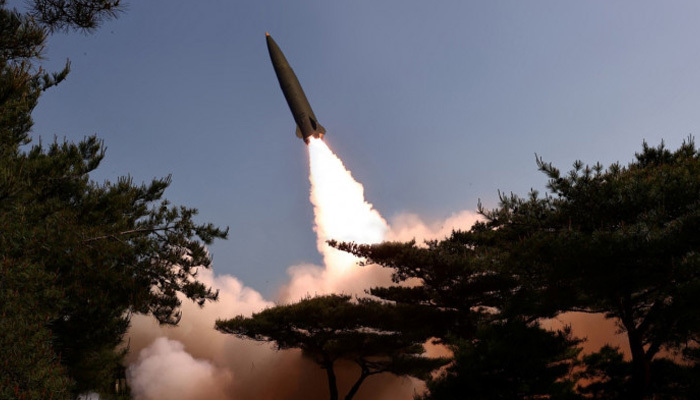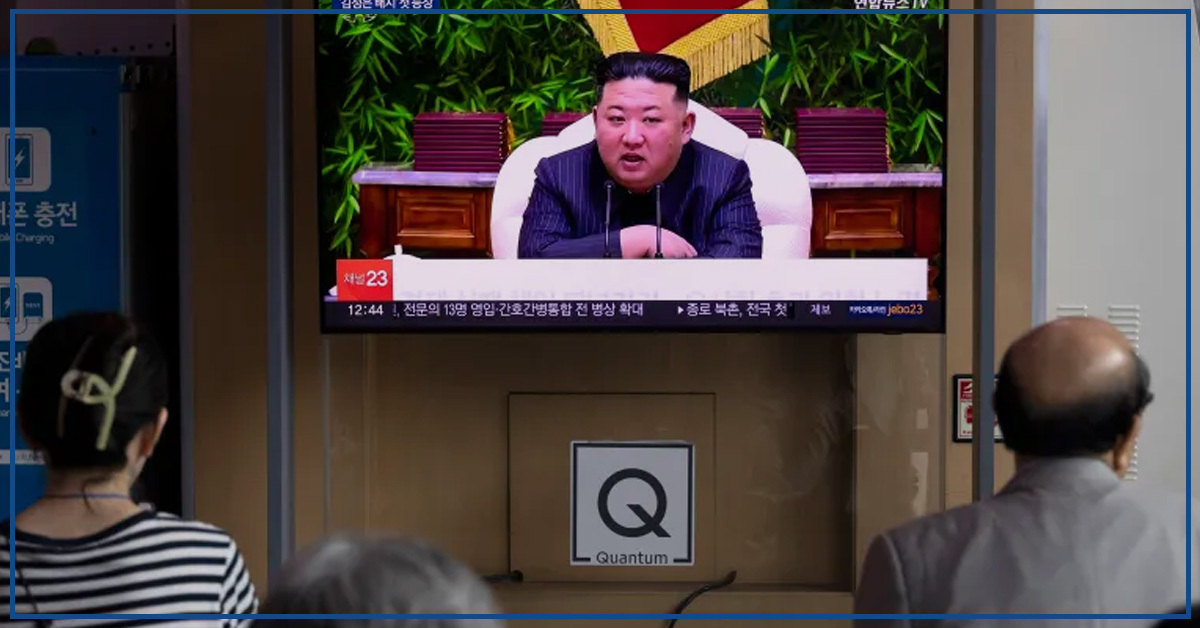In a continued display of military might, North Korea fired two ballistic missiles on Monday, with South Korea’s military suggesting that the second missile may have failed and exploded, potentially scattering debris over land. These launches followed a day after Pyongyang vowed to deliver “offensive and overwhelming” responses to recent military drills conducted by the United States, South Korea, and Japan.
The latest missile launches come on the heels of the completion of the ‘Freedom Edge’ military exercises, a three-day joint operation involving the US, Japan, and South Korea. These drills are part of a series of efforts by the three nations to enhance their defense readiness in the face of North Korea’s growing missile capabilities. Pyongyang, however, perceives these exercises as rehearsals for an invasion and evidence of hostility towards North Korea.
According to South Korea’s Joint Chiefs of Staff, the missiles were launched from the town of Jangyon in southeastern North Korea, heading in a northeasterly direction. The two missiles were fired 10 minutes apart. The first missile traveled approximately 600 kilometers (370 miles), while the second flew about 120 kilometers (75 miles). Although the military did not specify the exact landing sites, it noted that the second missile’s short flight distance made it unlikely to have reached the eastern waters where North Korea typically conducts its tests.
Joint Chiefs of Staff spokesperson Lee Sung-joon addressed the media, suggesting there were likely issues with the second missile, which may have exploded mid-flight. If this was the case, the debris from the explosion would likely have fallen inland. South Korean media, citing unidentified military sources, corroborated this, indicating a high likelihood that the second missile crashed within North Korea’s territory. Meanwhile, the first missile reportedly landed in the waters off the eastern city of Chongjin.
The Monday launches mark North Korea’s first missile tests in five days, coinciding with the conclusion of the ‘Freedom Edge’ drills. These new multi-domain trilateral military exercises involved the United States, South Korea, and Japan, aiming to bolster their defensive coordination against potential North Korean threats.

North Korea’s response to these drills is consistent with its historical stance, framing such exercises as provocations and preparatory steps for an invasion. “In both North Korean politics and military policy, the best defense is often a good offense,” said Leif-Eric Easley, a professor of international studies at Ewha Womans University in Seoul. In an emailed comment, Easley explained that Pyongyang aims to project strength and avoid appearing weak, especially while South Korea engages in defense exercises with its allies, Japan and the United States.
Last Wednesday, North Korea also launched a missile, claiming it was a multiwarhead missile, the first known test of a new advanced weapon designed to evade US and South Korean missile defenses. However, South Korea disputed this claim, asserting that the missile appeared hypersonic but spiraled out of control and exploded shortly after launch.
These successive missile tests by North Korea are part of a broader strategy to enhance its military capabilities and assert its sovereignty in the face of international pressure and military cooperation among its adversaries. The international community remains on high alert as North Korea continues to develop its missile technology, posing a growing threat to regional and global security.
The United States, South Korea, and Japan have repeatedly called for North Korea to cease its provocative actions and return to the negotiating table. However, Pyongyang has remained defiant, insisting that its missile tests are a legitimate exercise of its right to self-defense.
The situation on the Korean Peninsula remains tense, with each new missile launch by North Korea heightening fears of a potential military escalation. As the international community watches closely, the need for diplomatic efforts to resolve the underlying tensions and promote regional stability becomes increasingly urgent.





